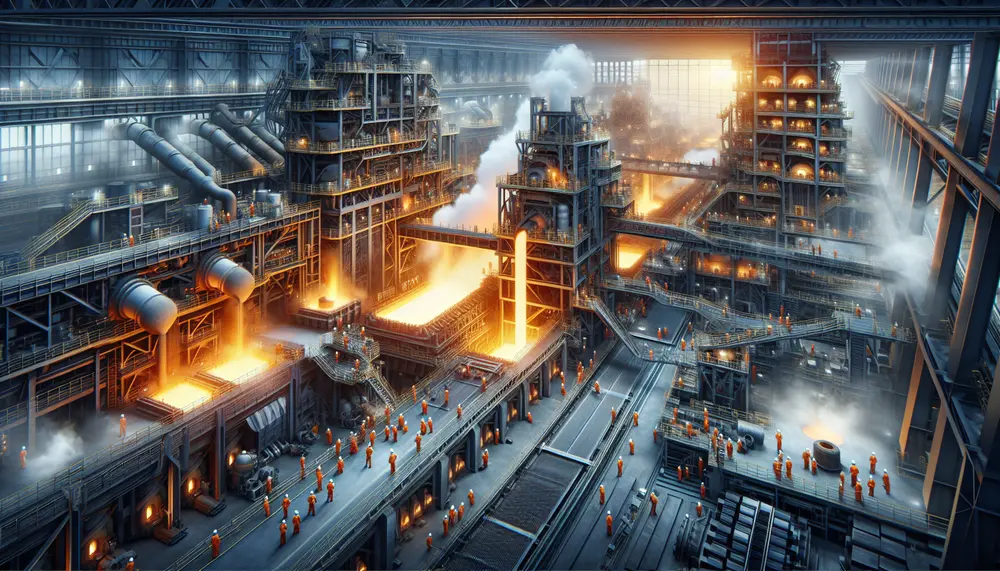Table of Contents:
Introduction to Steel Making LF Process
The steel making LF process is a crucial step in modern steel production. It involves the use of a ladle furnace (LF) to refine and adjust the composition of molten steel. This process ensures that the steel meets specific quality standards before it is cast into its final shape.
The primary goal of the LF process is to enhance the quality of the steel by controlling its temperature and chemical composition. This is achieved through various techniques such as desulfurization, deoxidation, and alloying. The LF process also helps in removing impurities and unwanted inclusions from the steel, resulting in a cleaner and more consistent product.
By using the LF process, steel producers can achieve better control over the final properties of the steel. This includes improved mechanical properties such as strength, ductility, and toughness. Additionally, the LF process allows for the production of specialized steel grades that meet the demands of various industries, from construction to automotive manufacturing.
Overall, the steel making LF process is an essential part of the steel production chain. It ensures that the steel produced is of high quality and meets the stringent requirements of modern applications. Understanding this process is key to optimizing steel production and achieving superior results.
History and Development of Ladle Furnaces (LF)
The development of ladle furnaces (LF) revolutionized the steel industry. Introduced in the 1960s by ASEA in Sweden, ladle furnaces provided a new way to refine steel. This innovation allowed for better control over the steel's temperature and composition during the production process.
Initially, one of the main challenges was creating vacuums that could handle the high temperatures and maintain the integrity of the electrodes. Over time, advancements in technology addressed these issues, making ladle furnaces more efficient and reliable.
One significant improvement was the separation of heating units from vacuum units. This separation allowed for more precise temperature control, with heating rates reaching approximately 5°C per minute. This innovation enabled steel producers to achieve the desired properties in their products more consistently.
Throughout the years, the design and functionality of ladle furnaces have continued to evolve. Modern ladle furnaces now come with features such as inert roofs and twin positions with swiveling electrodes. These advancements have further optimized the steel making LF process, making it more efficient and effective.
Today, ladle furnaces are an integral part of the steel production process. They play a crucial role in ensuring that the steel produced meets the high standards required by various industries. The continuous development of ladle furnaces reflects the ongoing efforts to improve steel production and meet the ever-growing demands of the market.
FAQ on Steel Making Ladle Furnace (LF) Process
What is the primary goal of the LF process in steel making?
The primary goal of the LF process is to enhance the quality of steel by controlling its temperature and chemical composition. This includes desulfurization, deoxidation, and alloying to ensure the steel meets specific quality standards before casting.
When and where were ladle furnaces first developed?
Ladle furnaces were first developed in the 1960s by ASEA in Sweden. They revolutionized the steel industry by allowing better control over the steel's temperature and composition during production.
What advancements have been made in ladle furnaces since their development?
Since their development, significant advancements in ladle furnaces include the separation of heating units from vacuum units, the introduction of inert roofs, and twin positions with swiveling electrodes. These improvements have enhanced temperature control and process efficiency.
How does the LF process improve the mechanical properties of steel?
The LF process helps to achieve improved mechanical properties of steel, such as increased strength, ductility, and toughness. By refining and adjusting the steel's composition and removing impurities, the final product is cleaner and more consistent.
What are the key features of modern ladle furnaces?
Modern ladle furnaces feature inert roofs, twin positions with swiveling electrodes, separate heating and vacuum units, and advanced control systems. These features allow for precise temperature and compositional control, leading to higher quality steel production.





